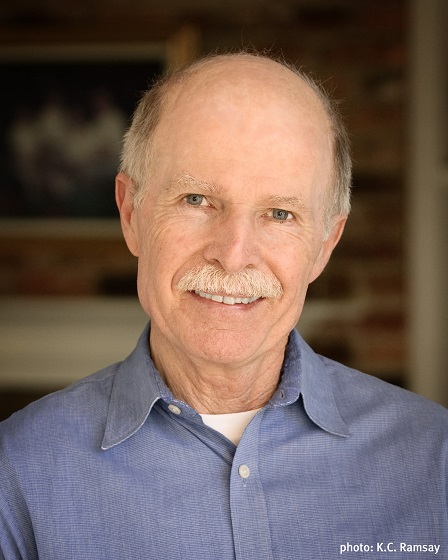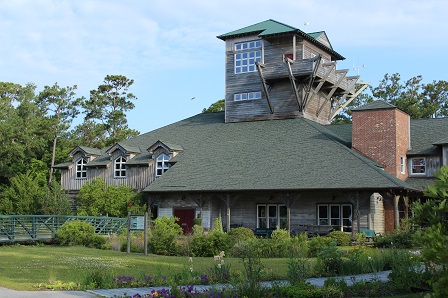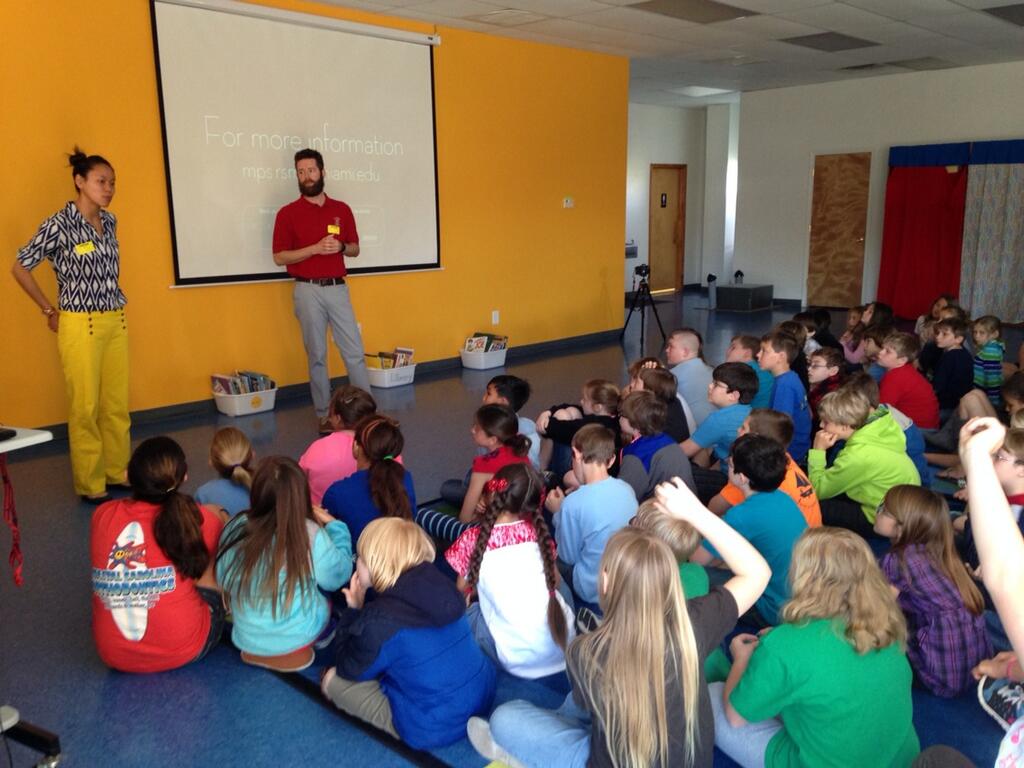This interview has been condensed and edited.
- You originally are from the Northeast. When did your relationship with the North Carolina coast begin?
I grew up in a suburb of New York City in New Jersey. When I came here, I worked for the N.C. Wildlife Commission for about 20 years on the magazine Wildlife in North Carolina. I learned a lot about the state just traveling around writing stories. That’s how I got interested in the workboats. I was down there exploring the Down East region and how lovely the area was. I would take pictures and come back every now and then to take more pictures. That’s where I got the start for the book.
- You had taken photographs for a while in Core Sound. At what point did you feel like you had something special, that this had the potential to make up a book?
In 2004, I presented my pictures in an exhibit at the Core Sound Museum on Harkers Island and the response was interesting. Many of the pictures that I thought were my best ones were landscape shots with maybe a boat in it, but not always. I found that people would stop at photos of boats and spend a lot of time discussing them and pointing at certain things. The rest of my photographs they couldn’t care less about. After this happened several times, I finally asked a fellow who was looking at one of these photos, “Why did you find this picture so interesting?” And he could tell me all kinds of things — almost like the secret history of the boat. That it was built by a certain boatbuilder, and that it was built in the community of Atlantic, that it was an Atlantic-type boat. I said, “You mean boats can be recognized by where they were built?” I began to realize that a boat contained a lot of history and that asking questions about boats and their connections might be a good way to understand the culture of the region. That’s when I though such a documentary might make a good book.
- North Carolina has a long coastline. What was the appeal of this specific area of Carteret County?
The whole area out there is a unique in that there about a dozen of these — originally — fishing communities that existed in what is known as Down East. Some of them have been around for more than two centuries, which is startling. Up until recently they were pretty isolated from each other. It was difficult to establish any contact between the communities except by boat. So boats were really important to these communities. They were small craft and they really had a unique quality to me.
- In this book, the boats have as much character as people. How did you get that to come across in your writing and through your photos?
Boats do have a certain character, mostly because they are built by an individual. There is no pattern book. A man wants a boat and he asks a boatbuilder to build him one. He gives him some specifications — the boat’s length, maybe, and its intended use — but the boatbuilder would build it out of his own knowledge and skills. It expressed him and it was his signature. Each boat is different. They’re never all the same.
- Who do you think should read this book and what do you want readers to get out of it?
Anyone who loves wooden boats might enjoy this book. What I’d like readers to get out of it is an appreciation for the boatbuilding heritage that has existed Down East for a couple of centuries, and also the heritage of making a living from the sea. This heritage is very important not just to the Core Sound area, but to other coastal communities. What fascinated me was how important these old boats are to maintaining a community’s history. A boatbuilder builds a boat for someone else, and a third person’s name is commonly place on the boat. So very quickly there’s a web of connections centered in the boat. Over time, that web grows more complex as the boat asses to other owners and families over its lifetime and as numbers of fishermen work on the boat as crew members. It was startling to me to discover how detailed these memories about these connections could be, going back several generations. Talking about boats is like families telling stories around the dinner table.
- It seems that you built relationships as you interviewed members of these communities. Do you still keep in touch?
Yes, I do. Every couple of months I spend a couple of days in Atlantic and visit some of the fishermen and others who I befriended over the years. I spend a lot of time making visits while I’m down there, see how everyone is doing, who’s fishing, who’s not, catch up on the gossip. I know I’m not a native of the place. I’m a “dingbatter.” It’s what Core Sound people call outsiders. I know I’m from off the island, but I do value their friendship and I think they’re pretty accepting of me. I think they look forward to seeing me and we chat about my life and my family. So it’s really a very nice and almost unexpected thing to have happened.
- In the book you talk about going out fishing on these boats with the fishermen to understand the process of long-hauling. What did you get out of that experience?
Well, aside from getting to know the fishermen a little better, I got a deeper understanding of how hard it is to make a living as a fisherman. I learned about long-haul fishing, which is what the Atlantic fishermen have practiced over the generations, passing it along from father to son. It’s a tough way to make a living. And I got to see how the boats worked together — it’s kind of like choreography. Long-hauling was a very difficult process for me to understand. For almost no reason at all, you think all of a sudden the crew is jumping into skiffs and pulling out nets and then something else happens and now they’re out of the skiffs and into chest-deep water. The bigger boats are circling around and then all of a sudden the run boat comes out from the fish house back in the village. There’s a lot of movement but not a whole lot of shouting. You get a sense that this is an old process that men have memorized, and it’s a process that many of the men love but that most of them have abandoned because it’s not making them much money.
- But despite all this, you are able to end the book in a somewhat hopeful tone.
Yes and no. In the last chapter of the book, I talk about the restoration of two old boats on Harkers Island in Atlantic. Restoring a few boats is not enough on which to hinge the future of all these communities. I found it mostly symbolic, but important nonetheless. I think people in these communities are trying to shape their future in a positive way at the same time that they want to remember and celebrate their past. The folks down at the Core Sound Waterfowl Museum and Heritage Center on Harkers Island are doing a wonderful job of bringing people together from various communities and celebrating their long heritage. They have community nights where people from a single community — Atlantic, for example — gather in the museum and trade stories about their mothers and fathers, or about the past. A few weeks later, people from Davis will gather. And so on.
There is a lot of interest in maintaining the traditions and the sense of community that they have. It’s not going to be an easy thing to hold on to. But Down East people are trying to find a way.
An exhibition of photographs from The Workboats of Core Sound is on permanent display at the Core Sound Waterfowl Museum and Heritage Center on Harkers Island. Another exhibit of photographs and text from the book will open at the National Humanities Center in the Research Triangle Park in September 2014.
This article was published in the Summer 2014 issue of Coastwatch.
For contact information and reprint requests, visit ncseagrant.ncsu.edu/coastwatch/contact/.
- Categories:



